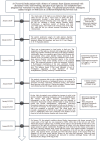First Documented Successful Treatment of Chronic Postoperative Fungal Endophthalmitis Induced by Trichosporon Inkin with Fluconazole
- PMID: 39734738
- PMCID: PMC11681906
- DOI: 10.2147/IDR.S485152
First Documented Successful Treatment of Chronic Postoperative Fungal Endophthalmitis Induced by Trichosporon Inkin with Fluconazole
Abstract
This report details an uncommon occurrence of chronic endophthalmitis following cataract surgery attributed to an infection by Trichosporon inkin (T. inkin). The infection was identified through MALDI-TOF mass spectrometry along with sequencing analysis. Although the patient exhibited a robust immune response, the infection escalated quickly from the right eye to the left. Treatment involved vitrectomy and peeling surgery on the right eye, paired with systemic fluconazole antifungal therapy and intravitreal injection, resulting in significant recovery. The visual acuity of the right eye enhanced from finger counting to 20/63. This account represents the inaugural documented instance of endophthalmitis caused by T. inkin that was effectively managed with fluconazole. This underscores the critical role of vitreous humor enrichment culture and antifungal susceptibility testing of T. inkin in the treatment of endophthalmitis.
Keywords: MALDI-TOF; Trichosporon inkin; endophthalmitis; fluconazole; matrix-assisted laser desorption ionization time of flight.
© 2024 Fan et al.
Conflict of interest statement
The authors state that the study was carried out without any commercial or financial ties that might be interpreted as a possible conflict of interest.
Figures




Similar articles
-
Trichosporon Endophthalmitis Following Cataract Surgery: A Case Report.Cureus. 2023 Jan 22;15(1):e34067. doi: 10.7759/cureus.34067. eCollection 2023 Jan. Cureus. 2023. PMID: 36843694 Free PMC article.
-
Postoperative fungal endophthalmitis caused by Trichosporon asahii treated with voriconazole.Arq Bras Oftalmol. 2015 Jul-Aug;78(4):252-4. doi: 10.5935/0004-2749.20150065. Arq Bras Oftalmol. 2015. PMID: 26375343
-
Rapid pathogen identification and antimicrobial susceptibility testing in in vitro endophthalmitis with matrix assisted laser desorption-ionization Time-of-Flight Mass Spectrometry and VITEK 2 without prior culture.PLoS One. 2019 Dec 30;14(12):e0227071. doi: 10.1371/journal.pone.0227071. eCollection 2019. PLoS One. 2019. PMID: 31887220 Free PMC article.
-
[Endoscopy-guided 20-G vitrectomy in severe endophthalmitis: Report of 18 cases and literature review].J Fr Ophtalmol. 2015 Dec;38(10):941-9. doi: 10.1016/j.jfo.2015.07.005. Epub 2015 Nov 10. J Fr Ophtalmol. 2015. PMID: 26563835 Review. French.
-
Trichosporon inkin meningitis in Northeast Brazil: first case report and review of the literature.BMC Infect Dis. 2018 Sep 18;18(1):470. doi: 10.1186/s12879-018-3363-7. BMC Infect Dis. 2018. PMID: 30227852 Free PMC article. Review.
References
Publication types
LinkOut - more resources
Full Text Sources

